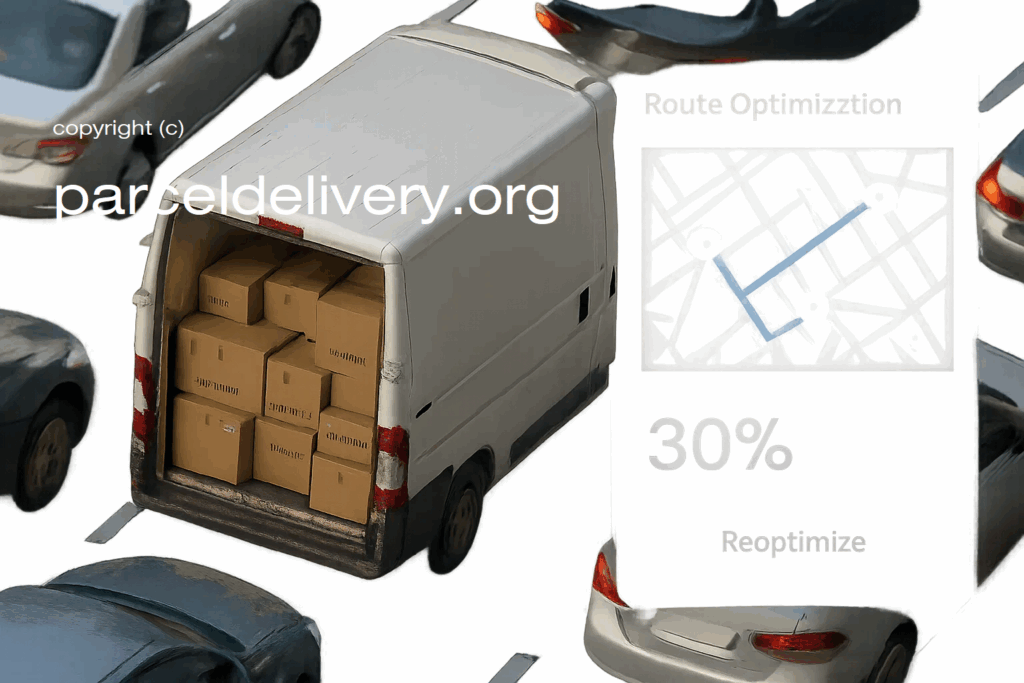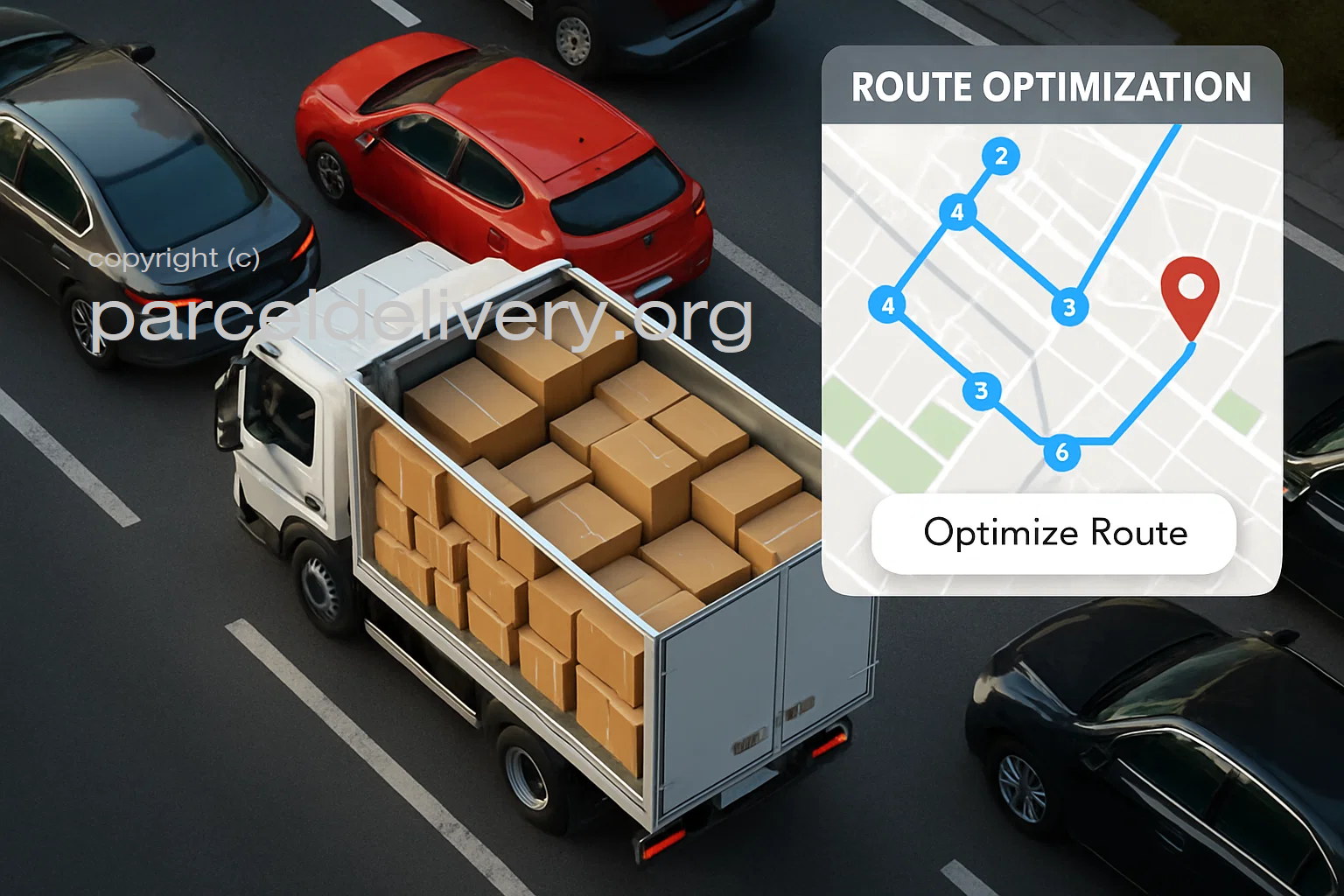n today’s rapidly expanding e-commerce landscape, parcel delivery has become the critical bridge between online retailers and their customers. However, the phenomenon of missed deliveries represents a significant challenge that affects all stakeholders within the supply chain ecosystem. This comprehensive analysis examines the multifaceted impact of failed parcel delivery attempts and explores technological solutions to enhance first-attempt delivery rates.
The Consumer Experience: When Parcel Delivery Falls Short
The modern consumer expects seamless parcel delivery experiences that match the convenience of online shopping. When delivery attempts fail, customers encounter a cascade of inconveniences that fundamentally undermine the value proposition of e-commerce. The dreaded “Sorry, we missed you” notification transforms what should be a satisfying conclusion to the shopping experience into a frustrating ordeal.
Consumers facing failed parcel delivery attempts must navigate several suboptimal scenarios: retrieving packages from neighbors, rescheduling delivery appointments, or making inconvenient trips to distribution centers. In cases involving high-value items such as electronics, the stakes become even higher, as customers may need to engage with complex customer service processes or face potential security concerns regarding package whereabouts.
Brand Perception and Customer Loyalty in Parcel Delivery
The quality of parcel delivery services has emerged as a crucial differentiator in the competitive e-commerce marketplace. Research indicates that consumers typically do not distinguish between the retailer’s brand and the delivery service provider’s performance. Consequently, poor parcel delivery experiences directly impact brand perception and customer retention rates.
The last-mile delivery phase represents the sole physical touchpoint between online retailers and their customers. When parcel delivery operations fail to meet expectations, customers readily migrate to competitors who can provide superior delivery experiences. This phenomenon underscores the strategic importance of reliable parcel delivery services in maintaining competitive advantage within the e-commerce sector.
Financial Impact of Inadequate Parcel Delivery Systems
The economic consequences of failed parcel delivery attempts extend far beyond individual consumer inconvenience. According to industry research conducted by IMRG, missed deliveries collectively cost retailers, courier services, and consumers approximately $2 billion annually. This substantial financial burden reflects the compound costs associated with redelivery attempts, customer service interventions, and potential revenue losses.
Consumer behavior studies reveal the severe commercial implications of substandard parcel delivery performance. Specifically, 69% of customers will cease patronizing retailers when purchased items fail to arrive within the promised two-day delivery window. Furthermore, 16% of consumers permanently abandon retailers after experiencing a single incorrect delivery, while 14% do likewise following just one late delivery incident.
The financial architecture of parcel delivery operations reveals additional cost pressures. Last-mile delivery typically accounts for 28% of total transportation expenses, with individual redelivery attempts averaging $15 per package. These figures demonstrate how failed initial parcel delivery attempts significantly amplify operational costs for logistics providers and e-commerce platforms.
Fraudulent claims represent another significant financial challenge within parcel delivery operations. The 2015 LexisNexis True Cost of Fraud Study indicates that United States e-commerce retailers lose approximately 0.51% of annual revenue to fraudulent activities, with 36% of these losses attributed to stolen or lost merchandise claims—many of which stem from problematic parcel delivery experiences.
Environmental Consequences of Failed Parcel Delivery
The environmental implications of inefficient parcel delivery systems merit serious consideration within broader sustainability discussions. The transportation sector, encompassing logistics and delivery operations, contributes 26% of total United States greenhouse gas emissions according to Environmental Protection Agency data.
Failed parcel delivery attempts necessitate additional vehicle trips, thereby multiplying carbon emissions associated with each package. With approximately one billion missed deliveries occurring annually, the cumulative environmental impact reaches 3,742 metric tons of carbon emissions. To contextualize this figure, this quantity represents the carbon sequestration equivalent of 9,050 trees over their 58-year lifespan.
These environmental costs highlight the importance of optimizing parcel delivery efficiency not only for economic reasons but also for corporate environmental responsibility and sustainability objectives.
Root Causes of Parcel Delivery Failures
Understanding the underlying factors that contribute to failed parcel delivery attempts is essential for developing effective solutions. Analysis reveals four primary categories of delivery failures:
Customer Unavailability: The most prevalent cause of missed parcel delivery attempts occurs when recipients are absent during delivery windows. This scenario reflects the fundamental challenge of coordinating delivery schedules with consumer availability patterns.
Delivery Delays: Unforeseen circumstances including traffic congestion, road closures, and other logistical constraints frequently result in delayed parcel delivery attempts. These delays often cause deliveries to occur outside of expected time windows when customers may no longer be available.

Loading and Fulfillment Errors: Operational mistakes during package preparation and vehicle loading can result in incomplete parcel delivery attempts. These errors may involve missing packages, incorrect items, or partial deliveries that fail to meet customer expectations.
Address Accuracy Issues: Incomplete, ambiguous, or incorrect address information significantly impedes successful parcel delivery execution. These challenges require delivery personnel to spend additional time locating recipients or may result in failed delivery attempts entirely.
Technological Solutions for Enhanced Parcel Delivery Performance
Advanced technology platforms offer promising solutions for improving parcel delivery success rates and operational efficiency. Artificial intelligence-powered logistics systems can generate dynamic routing plans that account for real-time operational constraints and environmental factors such as traffic conditions.
Modern parcel delivery optimization platforms provide several key capabilities:
Time-Defined Delivery Windows: Advanced scheduling systems enable parcel delivery within customer-preferred time slots, significantly reducing the likelihood of recipient unavailability.
Real-Time Tracking and Communication: Sophisticated tracking systems provide customers with accurate estimated delivery times and live tracking capabilities, enabling them to plan accordingly and ensure availability during parcel delivery attempts.
Intelligent Route Optimization: Machine learning algorithms can analyze historical delivery data, real-time traffic conditions, and other variables to optimize delivery routes and improve timing accuracy for parcel delivery operations.
Advanced Geocoding Solutions: Sophisticated address verification and geocoding technologies can accurately identify delivery locations even when working with incomplete or ambiguous address information, thereby improving parcel delivery success rates.
Measuring Success: First Attempt Delivery Rate (FADR)
The First Attempt Delivery Rate serves as a crucial performance metric for evaluating parcel delivery effectiveness. This metric quantifies the percentage of packages successfully delivered during the initial delivery attempt, providing a clear indicator of operational efficiency and customer satisfaction.
Organizations implementing advanced parcel delivery optimization technologies report significant improvements in FADR metrics, resulting in reduced operational costs and enhanced customer loyalty. These improvements demonstrate the tangible benefits of investing in sophisticated parcel delivery management systems.
Leading e-commerce platforms and logistics providers that have adopted technology-driven parcel delivery solutions report substantial improvements in delivery performance, customer satisfaction, and operational efficiency. These success stories illustrate the transformative potential of modern parcel delivery optimization technologies.
Conclusion: The Future of Parcel Delivery Excellence
The evolution of parcel delivery systems represents a critical frontier in e-commerce development and customer experience optimization. As consumer expectations continue to rise and environmental concerns gain prominence, organizations must prioritize the development and implementation of efficient, reliable parcel delivery solutions.
The integration of artificial intelligence, real-time data analytics, and customer communication technologies offers unprecedented opportunities to enhance parcel delivery performance while reducing costs and environmental impact. Organizations that successfully leverage these technological advances will gain significant competitive advantages in the rapidly evolving e-commerce landscape.
Ultimately, the future of parcel delivery lies in the seamless integration of technology, operational excellence, and customer-centric design. By addressing the root causes of delivery failures and implementing comprehensive solutions, businesses can transform parcel delivery from a potential source of customer frustration into a powerful differentiator that drives growth, loyalty, and sustainability.

